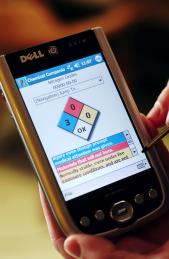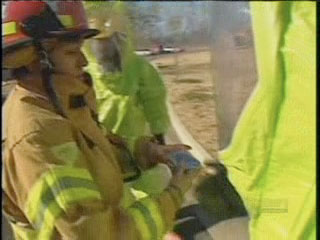Chemical Companion is a software tool that provides first responders and hazmat teams with detailed information on 130 of the most common chemicals associated with incidents involving hazardous materials. It runs on a personal digital assistant (PDA) and can be updated with new information and chemicals.
When dealing with hazardous materials, information is critical. Before first responders can aid victims and decontaminate a scene, they must determine what substances are present and understand the risks those substances pose to humans and the environment.
If there are no solid clues, Chemical Companion enables responders to identify a chemical by entering details about the substance's physical appearance, such as odor, color, and state. Or they can enter medical symptoms, such as twitching, constricted pupils, excessive sweating, and confusion, displayed by victims.
Chemical Companion provides essential information about a situation's potential chemical reactivity, which can result in toxic fumes, fires, or explosions. It also helps first responders make decisions about appropriate protective equipment and the length of time they can remain in a contaminated area, based on the protective equipment they're wearing.
The tool displays information regarding a situation's isolation and protective zones, the size of a spill, weather conditions, and time of day. It also helps first responders determine appropriate medical help, ranging from basic first aid to advanced life support.
To minimize the amount of typing Chemical Companion requires, it utilizes dropdown menus and automatic fill-ins. The program also features large lettering and shading between columns to make numbers and words easier to read from under bulky hazmat masks.
Chemical Companion was developed by a GTRI team headed by Gisele Bennett, director of the Electro-Optical Systems Laboratory, and Christina Baxter, a former senior research scientist.


